|
[1]
|
F. Brauer, P. van den Driessche, Models for transmission of disease with immigration of infectives, Math. Biosci., 171 (2001), 143–154. https://doi.org/10.1016/S0025-5564(01)00057-8 doi: 10.1016/S0025-5564(01)00057-8

|
|
[2]
|
W. Wang, G. Mulone, Threshold of disease transmission in a patch environment, J. Math. Anal. Appl., 285 (2003), 321–335. https://doi.org/10.1016/S0022-247X(03)00428-1 doi: 10.1016/S0022-247X(03)00428-1

|
|
[3]
|
C. Sun, W. Yang, J. Arino, K. Khan, Effect of media-induced social distancing on disease transmission in a two patchsetting, Math. Biosci., 230 (2011), 87–95. https://doi.org/10.1016/j.mbs.2011.01.005 doi: 10.1016/j.mbs.2011.01.005

|
|
[4]
|
X. Feng, L. Liu, S. Tang, X. Huo, Stability and bifurcation analysis of a two-patch SIS model on nosocomial infections, Appl. Math. Lett., 102 (2020), 106097. https://doi.org/10.1016/j.aml.2019.106097 doi: 10.1016/j.aml.2019.106097

|
|
[5]
|
D. Gao, S. Ruan, An SIS patch model with variable transmission coefficients, Math. Biosci., 232 (2011), 110–115. https://doi.org/10.1016/j.mbs.2011.05.001 doi: 10.1016/j.mbs.2011.05.001

|
|
[6]
|
D. Gao, C. Cosner, R. S. Cantrell, J. C. Beier, S. Ruan, Modeling the spatial spread of rift valley fever in egypt, Bull. Math. Biol., 75 (2013), 523–542. https://doi.org/10.1007/s11538-013-9818-5 doi: 10.1007/s11538-013-9818-5

|
|
[7]
|
V. Capasso, G. Serio, A generalization of the Kermack-Mckendrick deterministic epidemic model, Math. Biosci., 42 (1978), 41–61. https://doi.org/10.1016/0025-5564(78)90006-8 doi: 10.1016/0025-5564(78)90006-8

|
|
[8]
|
M. P. Coffee, G. P. Garnett, M. Mlilo, H. A. C. M. Voeten, S. Chandiwana, S. Gregson, Patterns of movement and risk of HIV infection in rural Zimbabwe, J. Infect. Dis., 191 (2005), 159–167. https://doi.org/10.1086/425270 doi: 10.1086/425270

|
|
[9]
|
V. Capasso, G. Serio, A generalization of the kermack-mckendrick deterministic epidemic model, Math. Biosci., 42 (1978), 43–61. https://doi.org/10.1016/0025-5564(78)90006-8 doi: 10.1016/0025-5564(78)90006-8

|
|
[10]
|
Z. Jiang, J. Wei, Stability and bifurcation analysis in a delayed SIR model, Chaos, Solitons Fractals, 25 (2008), 609–619. https://doi.org/10.1016/j.chaos.2006.05.045 doi: 10.1016/j.chaos.2006.05.045

|
|
[11]
|
R. Xu, Z. Ma, Stability of a delayed SIRS epidemic model with a nonlinear incidence rate, Chaos, Solitons Fractals, 41 (2009), 2319–2325. https://doi.org/10.1016/j.chaos.2008.09.007 doi: 10.1016/j.chaos.2008.09.007

|
|
[12]
|
Z. Zhang, Y. Suo, Qualitative analysis of a SIR epidemic model with saturated treatment rate, J. Appl. Math. Comput., 34 (2010), 177–194. https://doi.org/10.1007/s12190-009-0315-9 doi: 10.1007/s12190-009-0315-9

|
|
[13]
|
S. Liu, Y. Pei, C. Li, L. Chen, Three kinds of TVS in a SIR epidemic model with saturated, infectious force and vertical transmission, Appl. Math. Model., 33 (2009), 1923–1932. https://doi.org/10.1016/j.apm.2008.05.001 doi: 10.1016/j.apm.2008.05.001

|
|
[14]
|
A. K. Nilam, Mathematical analysis of a delayed epidemic model with nonlinear incidence and treatment rates, J. Eng. Math., 115 (2019), 1–20. https://doi.org/10.1007/s10665-019-09989-3 doi: 10.1007/s10665-019-09989-3

|
|
[15]
|
K. G. Nilam, Stability behavior of a nonlinear mathematical epidemic transmission model with time delay, Nonlinear Dyn., 98 (2019), 1501–1518. https://doi.org/10.1007/s11071-019-05276-z doi: 10.1007/s11071-019-05276-z

|
|
[16]
|
K. G. Nilam, A mathematical and numerical study of a SIR epidemic model with time delay, nonlinear incidence and treatment rates, Theory Biosci., 138 (2019), 203–213. https://doi.org/10.1007/s12064-019-00275-5 doi: 10.1007/s12064-019-00275-5

|
|
[17]
|
Z. Liu, Dynamics of positive solutions to SIR and SEIR epidemic models with saturated incidence rates, Nonlinear Anal.: Real World Appl., 14 (2013), 1286–1289. https://doi.org/10.1016/j.nonrwa.2012.09.016 doi: 10.1016/j.nonrwa.2012.09.016

|
|
[18]
|
M. E. Fatini, I. Sekkak, A. Laaribi, A threshold of a delayed stochastic epidemic model with Crowly-Martin functional response and vaccination, Phys. A, 520 (2019), 151–160. https://doi.org/10.1016/j.physa.2019.01.014 doi: 10.1016/j.physa.2019.01.014

|
|
[19]
|
R. K. Upadhyay, A. K. Pal, S. Kumari, P. Roy, Dynamics of an SEIR epidemic model with nonlinear incidence and treatment rates, Nonlinear Dyn., 96 (2019), 2351–2368. https://doi.org/10.1007/s11071-019-04926-6 doi: 10.1007/s11071-019-04926-6

|
|
[20]
|
P. van den Driessche, J. Watmough, Reproduction numbers and sub-threshold endemic equilibria for compartmental models of disease transmission, Math. Biosci., 180 (2002), 29–48. https://doi.org/10.1016/S0025-5564(02)00108-6 doi: 10.1016/S0025-5564(02)00108-6

|
|
[21]
|
H. L. Smith, P. Waltman, The Theory of the Chemostat, Cambridge University Press, 1995. https: //doi.org/10.1017/CBO9780511530043
|
|
[22]
|
Y. Wang, Z. Wei, J. Cao, Epidemic dynamics of influenza-like diseases spreading in complex networks, Nonlinear Dyn., 101 (2020), 1801–1820. https://doi.org/10.1007/s11071-020-05867-1 doi: 10.1007/s11071-020-05867-1

|
|
[23]
|
R. Pastor-Satorras, C. Castellano, P. Van Mieghem, A. Vespignani, Epidemic processes in complex networks, Rev. Mod. Phys., 87 (2015), 925–979. https://doi.org/10.1103/RevModPhys.87.925 doi: 10.1103/RevModPhys.87.925

|











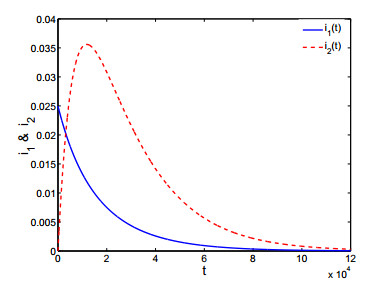
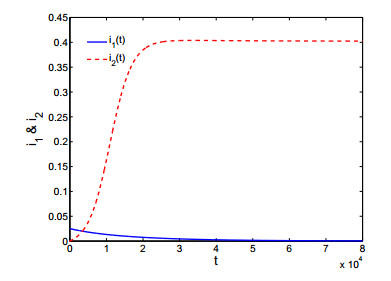


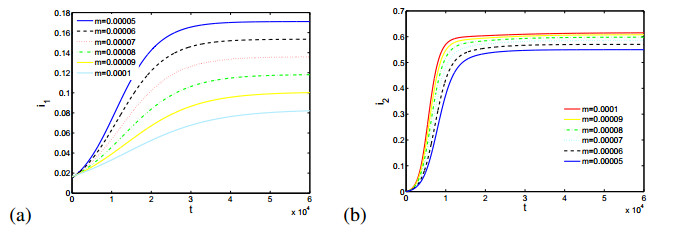
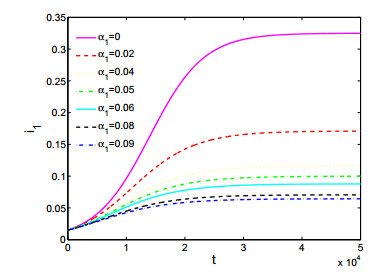
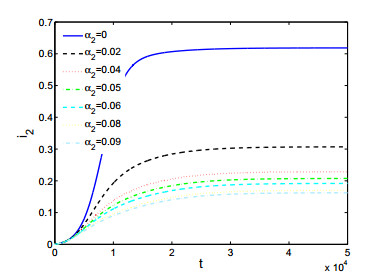


 DownLoad:
DownLoad: